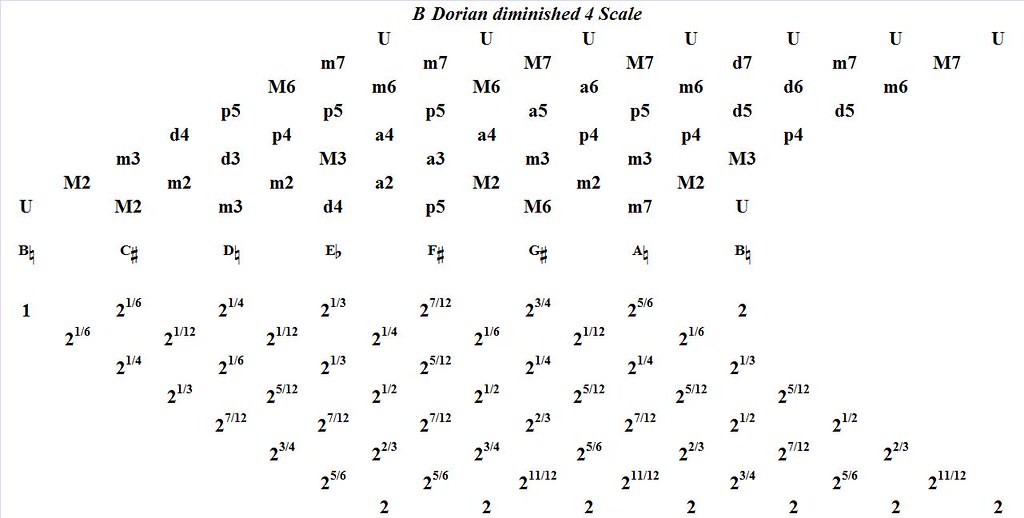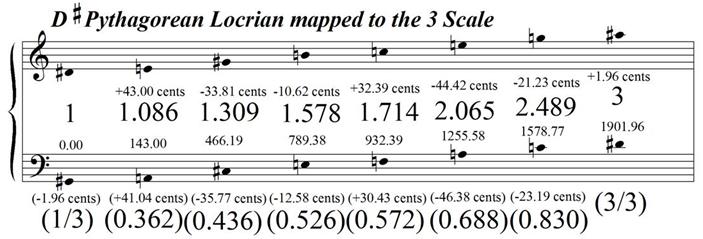 Harry Partch
Harry Partch's
Delusion of the Fury: A Ritual of Dream and Delusion @
Japan Society, New York, NY
December 7, 2007
John Jesurun: director, video and set designer
Dean Drummond: musical director
Dawn Akemi Saito: choreographer
Jeff Nash: lighting designer
Ruth Pongstaphone: costume designer
Harry Partch was such an iconic, Messianic figure of the twentieth century that one could almost feel his spirit at the Japan Society auditorium and wonder: what would Harry Partch do (WWHPD)? Given his larger-than-life status as a loner, an outspoken critic of his contemporaries, voice of
Bitter Music and all around sourpuss one might suspect a hyper-critical condemnation of a production so far removed from his control. With the multiple challenges of mounting the first ever production of
Delusion of the Fury since 1969 -- Partch's final and most ambitious opus -- one can only marvel at just how much the full multi-media corporeal experience enhances and profoundly defines this work. The world class performance, lighting, costumes and dance on this evening would have brightened even the darkest of Harry's moods.
If you've ever read a single paragraph in the press about Harry Partch then you're familiar with the standard boilerplate about "the microtonal composer and instrument builder who divided the octave into 43 parts." Most descriptions of Partch's music ends with this number and the logistical ramifications of performing music on a large body of unique - often one-of-a-kind instruments - has complicated efforts to understand the full corporeal experience that Partch has brought into this world through viciously uncompromising creative struggle. In the journey from
The 17 Lyrics of Li Po to
Delusion of the Fury Partch developed numerous solutions to the problems of vocals and theater with music. By structuring a harmonic language to accommodate spoken language and intoning voice he developed a sound that allows singing parts to resonate with exceptional clarity and without resorting to the vibrato and muddled, rhythmically unnatural singing that makes nineteenth century opera such a difficult listen.
And in building visually beautiful and dynamic instruments Partch also liberated the ensemble from the orchestra pit. By integrating the musicians and instruments into the stage performance the corporeal loop between music as a physical and dramatic act is closed to thrilling effect. With conducting responsibilities distributed to performers within the ensemble there is the additional uncluttering and social dynamic of removing the central figurehead of the "dictatorial" conductor in favor of crisp musicianship and a well rehearsed sense of time. Even before the performance began the mere presence of the original Partch instruments- illuminated brilliantly by the outstanding lighting of Jeff Nash - made for awesome staging.
With the onset of "The Exordium" - the overture of
Delusion of the Fury - the compositional details of this ritualistic piece unfold as a relentless assertion of this music's place as an innovative, creative high accomplishment. There was an eerie familiarity as several passages matched the recording of the 1969 performance (now re-released on
Innova) down to each timbral and temporal detail. The elements that recording cannot capture were astonishing. Particularly the deep resonance of the bass marimba that seemed to pull the entire room into its vibrating cavity. Witnessing the plaintive, train-like bellows of the "blow boy" as the performer physically rides this instrument with the pressure of body weight or the sounds of the "cry chord" - an instrument that requires two performers to coax its sounds - adds a new layer of understanding of the thick conceptual layers at work in this music. Each player is called into multi-instrumental duties as various hand percussion instruments and vocalizations emanated from all points of the stage.
The use of video projected onto the ceiling above the audience combined with the incredible choreography and costumes put this experience over the top. This is simply one of the best live experiences I've ever encountered. The sense of visually dynamic transitions matched the sonic elements of this composition with extreme precision and led to multiple chill-inducing sequences. At one point the dancers were thrown into the shadows by a sudden lighting change that left their moving forms as sharp silhouettes against the backdrop of brightly illuminated instruments. The theatrical charisma of Paige Collette - the soprano solo of the moving chorus - was completely irresistible. This was a rare combination of talent and artistic direction serving toward the corporeal experience that Partch had striven for over a lifetime.
If there was a point of divergence from the original
Delusion of the Fury vision that a curmudgeonly Harry Partch might object to it was the decision to dress the instrumentalists in black, as opposed to playing topless to "enhance the sounds with the reflections off of bare flesh." But then Partch was also wrong in believing that his music would fail to outlive its creator. This is an amazing work and 38 years is too long to wait for the next interpretation of this ritual of dream and delusion. The next interpretation of this unique and important American work will have a high standard to measure up to in this John Jesurun directed vision.

 Janel Leppin/Anthony Pirog
Janel Leppin/Anthony Pirog Marc Ribot: Shoe String Symphonettes. 1997. Tzadik: TZ 7504.
Marc Ribot: Shoe String Symphonettes. 1997. Tzadik: TZ 7504. Paul Plimley Trio: Safe-Crackers. 1999. Victo: cd066.
Paul Plimley Trio: Safe-Crackers. 1999. Victo: cd066. Cold Reading Trio: Life of Ghost. 2007. Form Function Records: f(F)0701.
Cold Reading Trio: Life of Ghost. 2007. Form Function Records: f(F)0701. Unsilent Night Baltimore - December 21, 2007
Unsilent Night Baltimore - December 21, 2007
 Terry Riley: The Harp of New Albion. 1986. New Albion/Celestial Harmonies: CEL 018/019.
Terry Riley: The Harp of New Albion. 1986. New Albion/Celestial Harmonies: CEL 018/019. Thomas Helton: Experiments In Minimalism. 2006. FreeBass Productions: CD-R available from the composer.
Thomas Helton: Experiments In Minimalism. 2006. FreeBass Productions: CD-R available from the composer. Susie Ibarra: Flower After Flower. 2000. Tzadik: TZ 7057.
Susie Ibarra: Flower After Flower. 2000. Tzadik: TZ 7057.
 Ludwig van Beethoven: The Complete Quartets, Vol. VI. Recorded in 1994. Delos International: DE 3036.
Ludwig van Beethoven: The Complete Quartets, Vol. VI. Recorded in 1994. Delos International: DE 3036. Albert Ayler Quintet - November 3, 1966 @ Belin Philharmonie, Berlin, Germany
Albert Ayler Quintet - November 3, 1966 @ Belin Philharmonie, Berlin, Germany AMM: Laminal: A three CD set marking thirty years in the making of AMMMusic. 1996. Matchless Recordings: MRCD31.
AMM: Laminal: A three CD set marking thirty years in the making of AMMMusic. 1996. Matchless Recordings: MRCD31. Aram Shelton & Ensemble Concertante @ The Red Room, Baltimore, MD
Aram Shelton & Ensemble Concertante @ The Red Room, Baltimore, MD Jim Staley: Mumbo Jumbo. 1993. Einstein Records: 004.
Jim Staley: Mumbo Jumbo. 1993. Einstein Records: 004. Roscoe Mitchell Sextet: Sound. 1966. Re-released in 1996. Delmark Records: DE-408.
Roscoe Mitchell Sextet: Sound. 1966. Re-released in 1996. Delmark Records: DE-408. Edgard Varese: The Complete Works. 1994. Decca Record Company: 289 460 208-2.
Edgard Varese: The Complete Works. 1994. Decca Record Company: 289 460 208-2. The Bad Plus: Prog. 2007. Do the Math Records/Heads Up International: HUCD 3125.
The Bad Plus: Prog. 2007. Do the Math Records/Heads Up International: HUCD 3125. Matthew Shipp Duo with Roscoe Mitchell: 2-Z. 1996. Thirsty Ear: thi 21312.2.
Matthew Shipp Duo with Roscoe Mitchell: 2-Z. 1996. Thirsty Ear: thi 21312.2. Erik Friedlander: Maldoror. 2003. Brassland: HWY-005.
Erik Friedlander: Maldoror. 2003. Brassland: HWY-005. Reuben Radding: Fugitive Pieces. 2006. Pine Ear Music: PEM 002.
Reuben Radding: Fugitive Pieces. 2006. Pine Ear Music: PEM 002. Jim Black: Alasnoaxis. 2000. Winter & Winter: 910061-2.
Jim Black: Alasnoaxis. 2000. Winter & Winter: 910061-2. Satanized: Sickness and Hellth: The Secular Chansons of.... 2007. Badmaster Records: BM010.
Satanized: Sickness and Hellth: The Secular Chansons of.... 2007. Badmaster Records: BM010. Ear Pieces/Matmos @ The Red Room, Baltimore, MD
Ear Pieces/Matmos @ The Red Room, Baltimore, MD
 Harry Partch's Delusion of the Fury: A Ritual of Dream and Delusion @ Japan Society, New York, NY
Harry Partch's Delusion of the Fury: A Ritual of Dream and Delusion @ Japan Society, New York, NY
 Albert Ayler: New Grass. 1968. Re-released in 2005. Impulse!: A-9175.
Albert Ayler: New Grass. 1968. Re-released in 2005. Impulse!: A-9175. William Parker Double Quartet: Alphaville Suite: Music Inspired by the Jean Luc Godard Film. 2007. Rogue Art: ROG-0010.
William Parker Double Quartet: Alphaville Suite: Music Inspired by the Jean Luc Godard Film. 2007. Rogue Art: ROG-0010. Kenny Dorham: Quiet Kenny. 1959. Re-released in 1992. Prestige/New Jazz Records: OJCCD-250-2.
Kenny Dorham: Quiet Kenny. 1959. Re-released in 1992. Prestige/New Jazz Records: OJCCD-250-2. Alex Ross @ An Die Musik, Baltimore, MD
Alex Ross @ An Die Musik, Baltimore, MD
 Ludwig van Beethoven: The Complete Quartets, Volume IV. Recorded in 1994. Delos: DE 3034.
Ludwig van Beethoven: The Complete Quartets, Volume IV. Recorded in 1994. Delos: DE 3034. Albert Ayler: Holy Ghost (box set) [disc 3]. 2004. Revenant Records: 213.
Albert Ayler: Holy Ghost (box set) [disc 3]. 2004. Revenant Records: 213. Don Byron: Romance with the Unseen. 1999. Blue Note Records: 7243 4 99545 2 6.
Don Byron: Romance with the Unseen. 1999. Blue Note Records: 7243 4 99545 2 6.